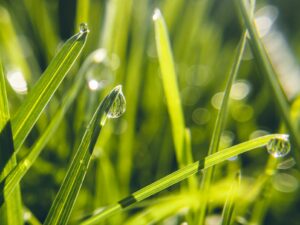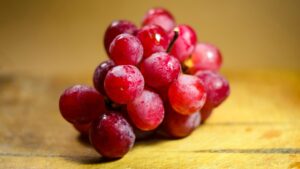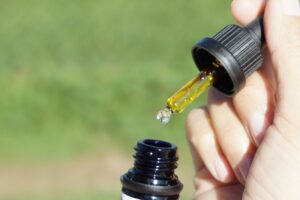Introduction
- This is the fourth largest crop in the world after maize, wheat and rice.
- Soybeans are an important source of vegetable oil and protein worldwide and there is growing interest in soy products amongst people who want to be healthy. Soy contains significant amounts of all the essential amino acids for humans.
- Soybean seeds can be eaten as a vegetable. When processed they give soy milk. Soy sauce can be made from mature fermented beans, while roasted seeds can be used as a coffee substitute. Soy flour, another possibility, is used as additives and extenders to cereal flour, meat products and in health foods.
- Soybeans is also a biofuel crop.
- Soybean meal is a very rich protein feedstuff for livestock while the vegetative portions of the plant can be used as silage, hay, pasture or may be ploughed in as green manure.
- The oil is used in the manufacturing of paints, linoleum, oilcloth, printing inks, soaps, insecticides and disinfectants. The lecithin phospholipids that are obtained as a by-product of the oil industry are used as wetting and stabilising agents in food, cosmetics, pharmaceuticals, leather, paint, plastic, soaps and detergent industries. Soybean meal and soybean protein are used in the manufacture of synthetic fibre, adhesives, textile sizing, waterproofing and fire-fighting foam. The straw can be used to make paper that is stiffer than that made from wheat straw.
- It is an excellent rotation crop with clearly discernible benefits to crops following.
Sources: http://wikipedia.org; Soyabean Market Value Chain Profiles (a Department of Agriculturepublication - see "Websites & publications" heading)
For vegetable soybeans, refer to the “Vegetables” page.
International business environment
- Soybeans account for the largest share of global oilseed demand (USDA, 2025).
- The largest producers of soybeans are Brazil and the US, followed in the distance by Argentina, China, and India (USDA, 2025). Brazil is the top exporter, followed by the US. The biggest importer by far is China, followed by the EU (USDA, 2025).
- The largest producers of soybean meal are China, US, Brazil and Argentina (USDA, 2025). Argentina, Brazil and the US are the top exporters. The biggest importer by a large margin is the EU (USDA, 2025).
- The largest producers of soybean oil are China, US, Brazil and Argentina (USDA, 2025). Argentina, Brazil and the EU are the top exporters. The biggest importers are India, Bangladesh, the EU, Morocco, and Peru (USDA, 2025).
Further reference:
- Find the latest Oilseeds: World Markets and Trade at https://apps.fas.usda.gov/psdonline/app/index.html#/app/downloads
- The annual BFAP Baseline discusses the global context of soybean production. Visit www.bfap.co.za.
- www.soyconnection.com – An information website run by the United Soybean Board (USA)
- Soy Info Center (USA), www.soyinfocenter.com
- www.unitedsoybean.org – United Soybean Board (USA)
- Soy Nutrition Institute (SNI) Global https://sniglobal.org
- www.australianoilseeds.com, Australian Oilseeds Federation
- The Soybean & Corn Advisor is at www.soybeansandcorn.com
- Find “information about soy and soya products” at www.soya.be.
- The American Soybean Association (ASA) – https://soygrowers.com
- National Oilseed Processors Association (NOPA) (USA), www.nopa.org
- Ohio Soybean Council and Ohio Soybean Association – www.soyohio.org
- World Initiative for Soy in Human Health (WISHH) – www.wishh.org
- https://ussec.org – US Soybean Export Council
- www.ift.org – Institute of Food Technologists (US).
South Africa imports and exports
See the “Monthly Bulletin” and Sunflower & Soybean Forum presentations on the South African Grain Information Service (SAGIS) website for updated export/import information.
- South Africa is a small player in the global soybean market, accounting for only 0,5% of global soybean production. This means that South African soybean prices are primarily influenced by market developments in significant soybean producing and consuming countries.
- Most of the traditionally imported soybean oilcake has been replaced in recent years, however, and although there are occasional imports to coastal regions, inland markets have reached self-sufficiency (BFAP, 2024).
Find the latest import and export statistics at www.sagis.org.za. - With regard to exports, phytosanitary requirements and quality standards must be adhered to and a PPECB certificate must be obtained.
Further reference:
- Find the latest Oilseeds: World Markets and Trade at https://apps.fas.usda.gov/psdonline/app/index.html#/app/downloads
- The annual BFAP Baseline discusses the global context of soybean production. Visit www.bfap.co.za.
- www.soyconnection.com – An information website run by the United Soybean Board (USA)
- Soy Info Center (USA), www.soyinfocenter.com
- www.unitedsoybean.org – United Soybean Board (USA)
- Soy Nutrition Institute (SNI) Global https://sniglobal.org
- www.australianoilseeds.com, Australian Oilseeds Federation
- The Soybean & Corn Advisor is at www.soybeansandcorn.com
- Find “information about soy and soya products” at www.soya.be.
- The American Soybean Association (ASA) – https://soygrowers.com
- National Oilseed Processors Association (NOPA) (USA), www.nopa.org
- Ohio Soybean Council and Ohio Soybean Association – www.soyohio.org
- World Initiative for Soy in Human Health (WISHH) – www.wishh.org
- https://ussec.org – US Soybean Export Council
- www.ift.org – Institute of Food Technologists (US).
Local business environment
- Soybean is the country’s most important oilseed crop.
- The western parts of the country has been responsible for most of the soybean expansion recently where it has replaced both white maize and sunflower (BFAP, 2024).
- Soybean is mainly produced in the Free State (43.7%), Mpumalanga (29%), North West (11%) and KwaZulu-Natal (7.9%) (DoA, 2025).
- The area planted to soybean increased 21-fold over the past 30 years to 1.2 million hectares in the 2024/25 production season (Sihlobo, 2025).
- Having more than doubled since 2020, production is forecast to reach a crop of 3.2 million tonnes by 2033 (BFAP, 2024).
- Depending upon local conditions, soybeans are typically planted in November through December. The plants react to day/night length ratios which stimulate the reproduction process. Planting in January will result in a shorter plant with lower harvest potential, as the days shorten during growth. On ripening, the leaves turn yellow and the moisture content of the seeds drops – from about 65% to 14% within 14 days – given that the weather is dry and hot.
- What has driven significant growth for soy oilcake remains the increase in the demand for animal feeds. As the livestock sector is supported by beef exports and actions such as the Poultry Masterplan, this is expected to continue (BFAP, 2024, 2022).
- Soybean consumption in the country is estimated at 87.5% for oil and oilcake, 10.7% for animal feed (especially in the broiler and egg industries) and 1.7% for human consumption (SAGIS, 2023).
Marketing
- No statutory levies are applicable and the marketing of oilseeds is free, the South African Futures Market determining domestic prices on a daily basis. The relative prices of other grain products, the exchange rate, availability of seed, availability and landed cost of imported crude oil, as well as plantings of other field crops mainly determine market prospects for soybeans.
- The Soybean marketing season in South Africa commences on 1 March.
- Statistics (e.g. crop estimates, export/import etc) may be found on the SAGIS website – www.sagis.org.za.
Source: Previous SAGIS notes to this project; SAGIS presentations at www.sagis.org.za; BFAP Agricultural Outlooks 2024-2033, 2023-2032, 2022-2031; Abstract of Agricultural Statistics (DoA), Soyabean Market Value Chain Profile (DoA).
Further reference:
- Find the “Regulations relating the grading, packing and marketing of soya beans intended for sale in the Republic of South Africa” on http://agbizgrain.co.za.
- The USDA’s Foreign Agricultural Service (FAS) does an annual update on South Africa’s soybean situation. Look for the “Oilseeds and Products Annual” on the internet. The April 2023 one is here.
For the grower
Find the many soybean production videos at www.proteinresearch.net.
Reasons for Soybean Growing
- Diversification away from maize
- The growing animal feed demand
- Growing production of soyfood
- Bio-diesel plant from soybeans
- Soybeans is one of a few crops that can be planted in rotation with wheat to ensure two crops per annum
- Crop rotation benefits include increased yields for both crops, and simplified weed and pest control.
- Since South Africa has to import soy, marketing is not a problem.
- Increased local production will save the country millions in foreign exchange
Source: "Grow Soybeans with confidence", a brochure put out by the then Protein Research Foundation. Visit www.proteinresearch.net.
National strategy and government point of contact
There is a levy on soybeans, administered by South African Cultivar & Technology Agency. See www.sactalevy.co.za.
Find contact details for the different directorates of the Department of Agriculture at www.nda.gov.za.
Role players
View the Premium Listings below (scroll down or click on “Premium Listings” on the Table of Contents to the right).
Further reference:
- Find a list of role players under the “Co-workers” option at www.sagis.org.za.
Training and research
- Agricultural Colleges/Provincial Departments of Agriculture do training and research in soybean production. Refer to the “Agricultural education and training” page.
Websites and publications
Visit the websites listed earlier on this page.
- A number of publications are available from ARC-Grain Crops. Call 018 299 6100 for the following: Your Guide to Successful Soybean Production, Production of Soybeans [also available in Afrikaans], and Soybean Production Manual.
- Available from ARC-Agricultural Engineering is Agro-processing of Oil Seeds (Soy beans, sunflower). Call 012 842 4017 or write to iaeinfo [at] arc.agric.za.
- CD Roms from the ARC-PHP (Plant Health and Protection) include: (i) Crop Pests, Vol. 4: Field Crops and Pastures Pastures (ii) Medically Important Spiders And Scorpions Of Southern Africa. Write to booksales [at] arc.agric.za or infopri [at] arc.agric.za.
- The Directorate Marketing used to publish the annual Soyabean Market Value Chain Profile. Check its web pages at www.nda.gov.za to see if it has resumed this publication.
- Consult the AgriSETA Learner Guide Primary Agriculture “Harvesting agricultural crops” at www.agriseta.co.za.
- Find the BFAP report “An overview of derived soy products used for human consumption in South Africa” (November 2021). Find it at www.bfap.co.za/an-overview-of-derived-soy-products-used-for-human-consumption-in-south-africa/
- Find the Soybean Cultivation DVDs by Wessel van Wyk and the Protein Research Foundation on www.youtube.com. Access the links from the Protein Research Foundation website, www.proteinresearch.net. Also find the latest copy of OILSEEDS Focus on the website.
- Production guidelines: growing soya beans can be read under “Publications” at www.dalrrd.gov.za.
- Find Pannar’s Soybean Production guide at www.pannar.com.
- Find industry information – grading of soy beans, crop quality surveys etc – on the SAGL website, www.sagl.co.za.
- www.sagis.org.za – the SAGIS website. Here you will find statistics (national stocks, producer deliveries, imports, exports, consumption; weekly parity prices, historical information, etc.)
Some articles
- Find soybeans articles and the research database at https://www.opot.co.za.
- Sihlobo W. 2025, June 26. “Ample Soybean Harvest in South Africa.” Agricultural Economics Today. Available at https://wandile.substack.com/p/ample-soybean-harvest-in-south-africa
- Tembo P. 2025, May 12. “SA soybean industry fights back after drought”. Food for Mzansi. Available at www.foodformzansi.co.za/sa-soybean-industry-fights-back-after-drought
- Sihlobo W. 2025, May 2. “Is there a risk of US soybeans being dumped in South Africa?”. Agricultural Economics Today. Available at https://wandilesihlobo.com/2025/05/02/is-there-a-risk-of-us-soybeans-being-dumped-in-south-africa/
- Sihlobo W. 2025, March 25. “Soybean is One of South Africa’s Agricultural Success Stories”. Wandile Substack. Available at https://wandile.substack.com/p/soybean-is-one-of-south-africas-agricultural
- Manoko T. 2024, August 8. “Drought and port pains hinder soybean growth in SA”. Food for Mzansi. Available at www.foodformzansi.co.za/drought-and-port-pains-hinder-soybean-growth-in-sa
- Majola G. 2023, September 28. “Exceptional performance in agricultural sector seen against NDP”. IOL. Available at www.iol.co.za/business-report/economy/exceptional-performance-in-agricultural-sector-seen-against-ndp-7f6e95c2-2cf3-4fb5-9bce-40c38d84cb58
- Sihlobo W. 2023, April 22. “Record soya bean forecast reignites confidence in South Africa’s agriculture’s potential”. Available at https://wandilesihlobo.com/2023/04/22/record-soya-bean-forecast-reignites-confidence-in-south-africas-agricultures-potential/
- TradeProbe 91 (2022, November) included the article “Prospects for South Africa’s soybean exports look promising with SPS protocols reached”. Find it at www.namc.co.za/wp-content/uploads/2023/02/Trade-Probe_Issue-91.pdf
- Ludolph N. 2022, April 19. “Could soybeans be your next venture?” Food for Mzansi. Available at www.foodformzansi.co.za/could-soybeans-be-your-next-venture/
- Du Toit M. 2022, January 14. “A six-step method for maximising soya bean yield”. Farmer’s Weekly. Available at www.farmersweekly.co.za/crops/field-crops/a-six-step-method-for-maximising-soya-bean-yield/
- Botha L. 2021, October 14. “Early planting: the key to soya bean success”. Farmer’s Weekly. Available at www.farmersweekly.co.za/crops/field-crops/early-planting-the-key-to-soya-bean-success/
- Sihlobo W. 2019, September 14. “Chart of the Day: South Africa soybean crushing plants not fully utilised”. Available at https://wandilesihlobo.com/2019/09/14/chart-of-the-day-south-africa-soybean-crushing-plants-not-fully-utilised/
- Goñi, U. 2018, October 26. “Soy destruction in Argentina leads straight to our dinner plates”. The Guardian. Available at www.theguardian.com/environment/2018/oct/26/soy-destruction-deforestation-in-argentina-leads-straight-to-our-dinner-plates
- Coleman, A. 2017, October 17. “The benefits of soya bean production in South Africa”. Farmer’s Weekly. Available at www.farmersweekly.co.za/crops/field-crops/benefits-soya-bean-production-south-africa/
- Reporter. 2017, August 23. “Soy as an alternative to plastic”. CosmeticBusiness. Available at www.cosmetic-business.com/news/677182






